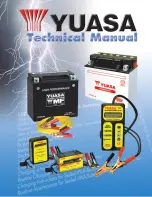
and size of the child. Therefore, be sure to
observe the notes on the "Occupant Clas-
sification System (OCS)" (
Y
page 49) and
on "Children in the vehicle" (
Y
page 56).
There you will also find instructions on rear-
ward and forward-facing child restraint sys-
tems on the front-passenger seat.
R
All other persons:
depending on the clas-
sification of the person in the front-
passenger seat, the front-passenger front
air bag is enabled or deactivated
(
Y
page 49). Be sure to observe the notes
on "Seat belts“ (
Y
page 42) and "Air bags"
(
Y
page 46). There you can also find infor-
mation on the correct seat position.
Seat belts
Introduction
Seat belts are the most effective means of
restricting the movement of vehicle occu-
pants in the event of an accident or the vehi-
cle rolling over. This reduces the risk of vehi-
cle occupants coming into contact with parts
of the vehicle interior or being ejected from
the vehicle. Furthermore, the seat belt helps
to keep the vehicle occupant in the best posi-
tion in relation to the air bag.
The seat belt system comprises:
R
Seat belts
R
Emergency Tensioning Devices and seat
belt force limiters
If the seat belt is pulled out of the belt outlet
quickly or with a jerky movement, the belt
retractor locks. The belt strap cannot be
extracted any further.
The Emergency Tensioning Device tightens
the seat belt in an accident, pulling the belt
close against the body. However it does not
pull the vehicle occupant back in the direction
of the backrest.
The Emergency Tensioning Device does not
correct an incorrect seat position or the rout-
ing of an incorrectly fastened seat belt.
When triggered, a seat belt force limiter helps
to reduce the force exerted by the seat belt on
the vehicle occupant.
The seat belt force limiters are synchronized
with the front air bags which absorb part of
the deceleration force. This can reduce the
force exerted on the vehicle occupants during
an accident.
!
If the front-passenger seat is not occu-
pied, do not engage the seat belt tongue in
the buckle on the front-passenger seat.
Otherwise, in the event of an accident, the
Emergency Tensioning Device and front-
passenger front air bag may be triggered
and would need to be replaced.
Important safety notes
The use of seat belts and child restraint sys-
tems is required by law in:
R
all 50 states
R
the U.S. territories
R
the District of Columbia
R
all Canadian provinces
Even where this is not required by law, all
vehicle occupants should correctly fasten
their seat belts before starting the journey.
G
WARNING
If the seat belt is incorrectly fastened, it can-
not protect as intended. Furthermore, an
incorrectly fastened seat belt can cause addi-
tional injury, for example, in an accident, dur-
ing braking or when abruptly changing direc-
tion. This poses an increased risk of injury or
even fatal injury.
Make sure that all vehicle occupants are
seated properly with a correctly fastened seat
belt.
G
WARNING
The seat belt does not offer the intended level
of protection if you have not moved the back-
rest to an almost vertical position. When brak-
ing or in the event of an accident, you could
slide underneath the seat belt and sustain
42
Occupant safety
Saf
ety
Содержание GT S 2016
Страница 4: ......
Страница 70: ...68...
Страница 88: ...86...
Страница 98: ...96...
Страница 160: ...158...
Страница 161: ...General notes 160 Important safety notes 160 Function restrictions 160 COMAND operating system 161 159 COMAND...
Страница 184: ...182...
Страница 185: ...Useful information 184 Stowage areas 184 Features 186 183 Stowage and features...
Страница 200: ...198...
Страница 201: ...Useful information 200 Engine compartment 200 ASSYST PLUS 206 Care 206 199 Maintenance and care...
Страница 210: ...208...
Страница 268: ...266...
Страница 269: ...267...
Страница 270: ...268...
















































